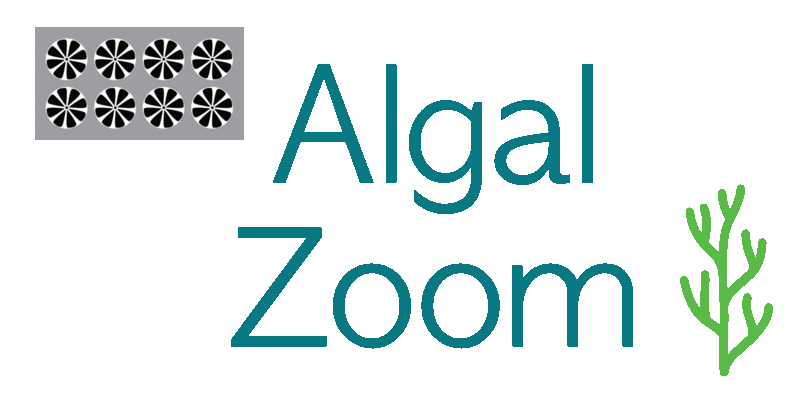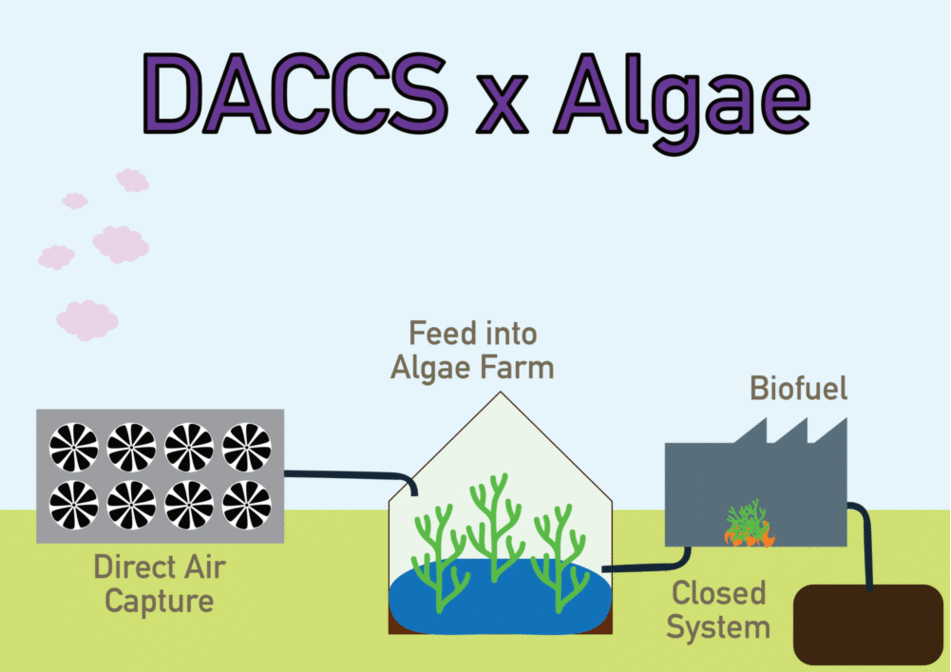Team 3B (Algal Zoom): How might we make DAACS produce green solutions beyond directly reducing greenhouse gas emissions?
To limit global warming to 1.5 °C or even 2 °C it is very likely that some form of negative emissions technology will be required. Direct Air Capture and Carbon Storage (DACCS) is one possible greenhouse gas removal (GGR) method which could be used to mitigate carbon emissions in the future. DACCS already has clear advantages over other GGR technologies, such as lower land-use than methods which require growth of biomass (BECCS, forestation) and the ability to turn captured carbon into a marketable product.
As a team, we investigated what benefits DACCS could offer beyond tackling climate change.

In our solution, captured CO2 is used to grow algae, which can be harvested and burned as a biofuel to provide heat and electricity. Algae is highly effective at removing CO2 from the atmosphere and can undergo enhanced growth under elevated CO2 concentrations (Singh & Singh 2014). Any CO2 released is captured and fed back into the algae farm or directed into long-term storage, creating a closed system. The algae can also be used to produce biodegradable plastics, human food products and supplements, animal feed and pharmaceuticals and provides an income stream making DACCS more economically viable.
“Algae: a green solution. Let it grow on you.”

References
Singh, S. P., & Singh, P. (2014). Effect of CO2 concentration on algal growth: A review. In Renewable and Sustainable Energy Reviews (Vol. 38, pp. 172–179). Elsevier Ltd. https://doi.org/10.1016/j.rser.2014.05.043
